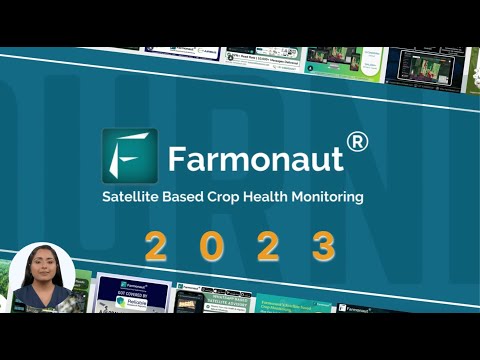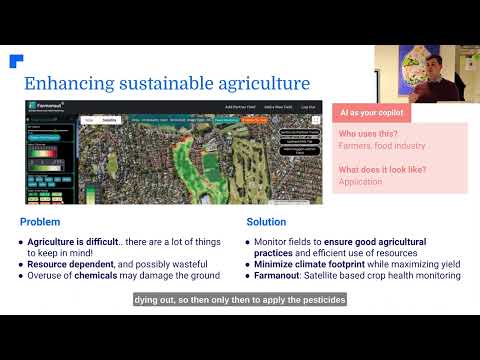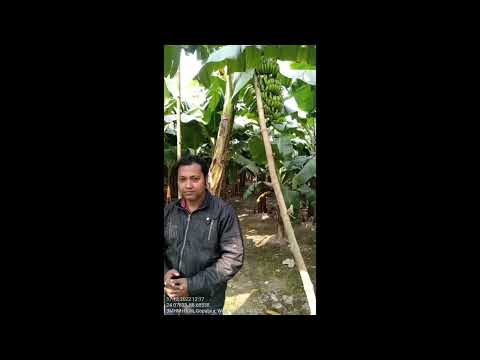Bakersfield Alert: Valley Fever Prevention Tips for Dusty Weather – Protect Your Health Outdoors

“In 2024, Kern County experienced record-breaking cases of valley fever, a soil-borne fungal disease affecting respiratory health.”
We’re here to shed light on a critical health concern that’s been affecting our community in Bakersfield and throughout Kern County: Valley Fever. As we navigate through dusty weather conditions, it’s crucial to understand the risks and take preventive measures to protect our health. In this comprehensive guide, we’ll explore the symptoms, prevention strategies, and treatment options for Valley Fever, empowering you with the knowledge to stay safe in high-risk areas.
Understanding Valley Fever: A Soil-Borne Threat
Valley Fever, scientifically known as Coccidioidomycosis, is a fungal infection caused by breathing in microscopic spores from the Coccidioides fungus. This fungus thrives in the soil of arid and semi-arid regions, including parts of California, Arizona, and other southwestern states. When the soil is disturbed by wind, construction, or agricultural activities, these spores can become airborne, posing a risk to anyone who inhales them.
The fungus responsible for Valley Fever is particularly prevalent in Kern County, making our region a hotspot for this disease. As climate changes and drought conditions persist, the risk of exposure to these fungal spores increases, highlighting the need for heightened awareness and preventive measures.
Recognizing Valley Fever Symptoms
Valley Fever can manifest in various ways, and symptoms can range from mild to severe. It’s essential to be aware of the following signs:
- Fatigue
- Cough
- Fever
- Shortness of breath
- Chest pain
- Joint aches
- Skin rash
In some cases, Valley Fever can progress to more severe forms, affecting the lungs, skin, bones, and even the brain. Early recognition of symptoms and prompt medical attention are crucial for effective management of the disease.
The Challenge of Diagnosis
One of the significant challenges with Valley Fever is its diagnosis. The symptoms often mimic those of other respiratory illnesses, leading to potential misdiagnosis or delayed treatment. Brynn Carrigan, Director of Kern County Public Health, shared her personal experience with a rare form of Valley Fever called cocci-meningitis:
“I just continued to progressively decline. And so that journey was a difficult one, and at times I felt like maybe, maybe it’s in my head,” said Carrigan. “Finally, it felt like somebody listened to me, that they valued what I was saying, and they knew that I knew something was wrong with my body.”
This account highlights the importance of persistence and open communication with healthcare providers when dealing with unexplained symptoms, especially in areas where Valley Fever is prevalent.
Prevention: Your First Line of Defense
While it’s impossible to completely avoid exposure to the Coccidioides fungus in endemic areas, there are several measures we can take to reduce our risk:
- Wear N95 Masks: When outdoors, especially during dusty or windy conditions, wearing an N95 mask can significantly reduce the inhalation of fungal spores.
- Keep Windows Closed: During windy days, keep your windows closed to prevent dust and spores from entering your home.
- Avoid Dusty Areas: Limit outdoor activities in dusty environments, particularly during and after dust storms.
- Wet the Soil: If you must disturb soil (e.g., gardening), wet it first to reduce the release of spores.
- Use Air Filtration: Consider using HEPA air filters in your home to improve indoor air quality.
“N95 masks can effectively filter out 95% of airborne particles, providing crucial protection against valley fever in dusty conditions.”
Valley Fever Prevention Measures and Effectiveness
| Prevention Measure | Estimated Effectiveness | Ease of Implementation |
|---|---|---|
| Wearing N95 masks outdoors | High | Easy |
| Keeping windows closed during windy conditions | Medium | Easy |
| Avoiding outdoor activities in dusty areas | High | Moderate |
| Wetting soil before disturbing it | Medium | Moderate |
| Using air filtration systems indoors | Medium | Moderate |
High-Risk Groups and Occupations
While anyone can contract Valley Fever, certain groups are at higher risk:
- Agricultural workers
- Construction workers
- Archaeologists
- Military personnel
- Older adults
- Pregnant women
- People with weakened immune systems
For those working in high-risk occupations, additional precautions may be necessary. Employers in agricultural and construction industries should implement dust control measures and provide appropriate personal protective equipment to their workers.
The Undisturbed Soil Factor
An interesting aspect of Valley Fever risk is the role of undisturbed soil. Paul Rzucidlo, Assistant Division Director of Health Services for KCPH, explains:
“Where they see most growth when they find it is in those undisturbed soils. So you know, those fields that we haven’t done anything within hundreds of years, and then they go and, you know, they do construction, or maybe they do expand the farm or something like that, but those are the real dangers of turning over dirt isn’t that undisturbed soil.”
This insight is particularly relevant for land development projects and expansion of agricultural areas. It underscores the need for careful planning and preventive measures when working with previously undisturbed land.
Treatment and Management of Valley Fever
For those diagnosed with Valley Fever, treatment options vary depending on the severity of the infection:
- Mild Cases: Often resolve on their own with rest and supportive care.
- Moderate to Severe Cases: May require antifungal medications such as fluconazole or itraconazole.
- Severe Infections: Might necessitate hospitalization and intravenous antifungal treatments.
It’s crucial to follow your healthcare provider’s instructions carefully and complete the full course of treatment, even if symptoms improve. Some individuals may require long-term or lifelong antifungal therapy to manage chronic forms of the disease.
The Quest for a Valley Fever Vaccine
Currently, there is no vaccine available for Valley Fever, a fact that highlights the ongoing need for research and development in this area. Dr. Carlos Alvarez, a long-time practitioner in Kern County, emphasizes the potential impact of a vaccine:
“If we have a vaccination, and many people are treated with this or inoculated with this vaccination, I think it will save a tremendous amount of people, their grief, their hardship. It can be devastating.”
The development of a Valley Fever vaccine remains a priority for researchers and public health officials, offering hope for more effective prevention in the future.
Community Awareness and Education
In response to the record-breaking cases of Valley Fever in 2024, Kern County Public Health has launched a new awareness campaign called “Faces of Valley Fever.” This initiative aims to share personal stories of those affected by the disease, highlighting the diverse ways it can impact individuals and families.
The campaign serves multiple purposes:
- Raising public awareness about Valley Fever symptoms and risks
- Providing hope and support to those currently battling the disease
- Educating the community on prevention strategies
- Encouraging early diagnosis and treatment
By putting faces and stories to the statistics, the campaign humanizes the impact of Valley Fever and underscores the importance of community-wide efforts in prevention and support.
The Role of Technology in Managing Agricultural Health Risks
In the face of challenges like Valley Fever, innovative technologies are playing an increasingly important role in managing agricultural health risks. Farmonaut’s crop plantation and forest advisory services offer valuable insights for farmers and land managers. By utilizing satellite imagery and advanced analytics, these services can help identify areas of high dust risk, guide soil management practices, and optimize irrigation strategies to reduce dust generation.
Additionally, large-scale farm management solutions can assist in implementing dust control measures across extensive agricultural operations. These technologies not only improve crop yields but also contribute to creating safer working environments in regions prone to Valley Fever.
Environmental Monitoring and Forecasting
Accurate environmental monitoring and forecasting are crucial in the fight against Valley Fever. Advanced weather prediction models and soil moisture monitoring can help identify conditions that are favorable for fungal growth and spore dispersal. This information can be used to issue timely warnings to the public and guide preventive actions.
Carbon footprinting tools, while primarily designed for sustainability purposes, can also provide valuable data on soil disturbance and land use changes that might increase Valley Fever risks. By understanding these patterns, communities and agricultural businesses can develop more targeted prevention strategies.
Protecting Agricultural Workers
Agricultural workers are among the most vulnerable to Valley Fever due to their frequent exposure to soil and dust. Implementing robust safety measures is essential:
- Providing and enforcing the use of N95 masks
- Implementing dust control measures during soil-disturbing activities
- Offering regular health screenings and education on Valley Fever risks
- Using enclosed cabs with air filtration on agricultural machinery
Fleet management solutions can play a role in protecting workers by optimizing routes to minimize exposure to high-risk areas and tracking equipment maintenance to ensure dust control systems are functioning properly.
The Economic Impact of Valley Fever
The impact of Valley Fever extends beyond health concerns, affecting the economic stability of individuals and communities. Medical expenses, lost productivity, and the need for long-term care can create significant financial burdens. For agricultural businesses, the risk of Valley Fever can lead to increased operational costs and potential labor shortages.
Innovative financial solutions, such as crop loan and insurance programs that consider Valley Fever risks, could help mitigate some of these economic challenges. These programs could provide financial protection for farmers and workers in high-risk areas, encouraging continued agricultural development while prioritizing health and safety.
Future Directions in Valley Fever Research and Prevention
As we continue to grapple with the challenges posed by Valley Fever, several areas of research and development show promise:
- Vaccine Development: Ongoing efforts to create an effective Valley Fever vaccine remain a top priority.
- Improved Diagnostic Tools: Developing faster, more accurate diagnostic tests to enable earlier detection and treatment.
- Environmental Modeling: Enhancing our ability to predict high-risk conditions for fungal growth and spore dispersal.
- Sustainable Agricultural Practices: Exploring farming methods that minimize soil disturbance and reduce dust generation.
- Public Health Strategies: Developing more effective public awareness campaigns and prevention programs.
These advancements, coupled with continued community education and preventive measures, offer hope for better management of Valley Fever in the future.
Conclusion: A Community Approach to Valley Fever Prevention
Valley Fever presents a significant challenge to our community in Bakersfield and throughout Kern County. However, by working together and implementing comprehensive prevention strategies, we can reduce its impact on our health and well-being. From individual actions like wearing N95 masks to community-wide efforts in dust control and public education, every step counts in our fight against this soil-borne threat.
As we move forward, let’s remain vigilant, support ongoing research, and continue to raise awareness about Valley Fever. By staying informed and taking proactive measures, we can protect ourselves, our families, and our community from the risks posed by this challenging disease.
FAQs about Valley Fever
- Q: Can Valley Fever be transmitted from person to person?
A: No, Valley Fever cannot be transmitted between people. It is only contracted by inhaling fungal spores from the environment. - Q: How long does it take for symptoms to appear after exposure?
A: Symptoms typically appear 1-3 weeks after exposure, but some people may not show symptoms for months. - Q: Are pets at risk for Valley Fever?
A: Yes, dogs and other animals can contract Valley Fever. If you suspect your pet has been exposed, consult a veterinarian. - Q: Can you develop immunity to Valley Fever after having it once?
A: Most people who have had Valley Fever develop some immunity, but reinfection is possible, especially in those with weakened immune systems. - Q: How is Valley Fever diagnosed?
A: Diagnosis typically involves a combination of symptom assessment, chest X-rays, and blood tests to detect antibodies to the fungus.
Remember, staying informed and taking preventive measures are key to protecting yourself and your loved ones from Valley Fever. If you have concerns or experience symptoms, don’t hesitate to consult with a healthcare professional.
Resources for Further Information
For those seeking more information on Valley Fever prevention and management, consider exploring these valuable resources:
- Farmonaut’s Crop Monitoring App: While primarily designed for agricultural use, this app provides valuable insights into soil and environmental conditions that could be relevant for Valley Fever risk assessment.
- Farmonaut API: For developers and researchers interested in integrating environmental data into Valley Fever prediction models.
- API Developer Docs: Detailed documentation for utilizing Farmonaut’s satellite and weather data in custom applications.
These tools, while not specifically designed for Valley Fever, can provide valuable environmental data that may be useful in understanding and predicting conditions favorable to fungal growth and spore dispersal.

Earn With Farmonaut: Earn 20% recurring commission with Farmonaut’s affiliate program by sharing your promo code and helping farmers save 10%. Onboard 10 Elite farmers monthly to earn a minimum of $148,000 annually—start now and grow your income!
Stay Informed and Protected
As we continue to face the challenges posed by Valley Fever, staying informed and taking proactive measures are our best defenses. By understanding the risks, recognizing symptoms early, and implementing preventive strategies, we can protect ourselves and our community from this persistent health threat.
Remember, your health and safety are paramount. Stay vigilant, follow local health advisories, and don’t hesitate to seek medical attention if you suspect exposure to Valley Fever. Together, we can build a more resilient and healthier Bakersfield for all.
For more information on agricultural technology solutions that can help manage environmental risks, visit:
By leveraging advanced agricultural technologies and staying informed about environmental risks, we can work towards a healthier, more resilient future for our community.








